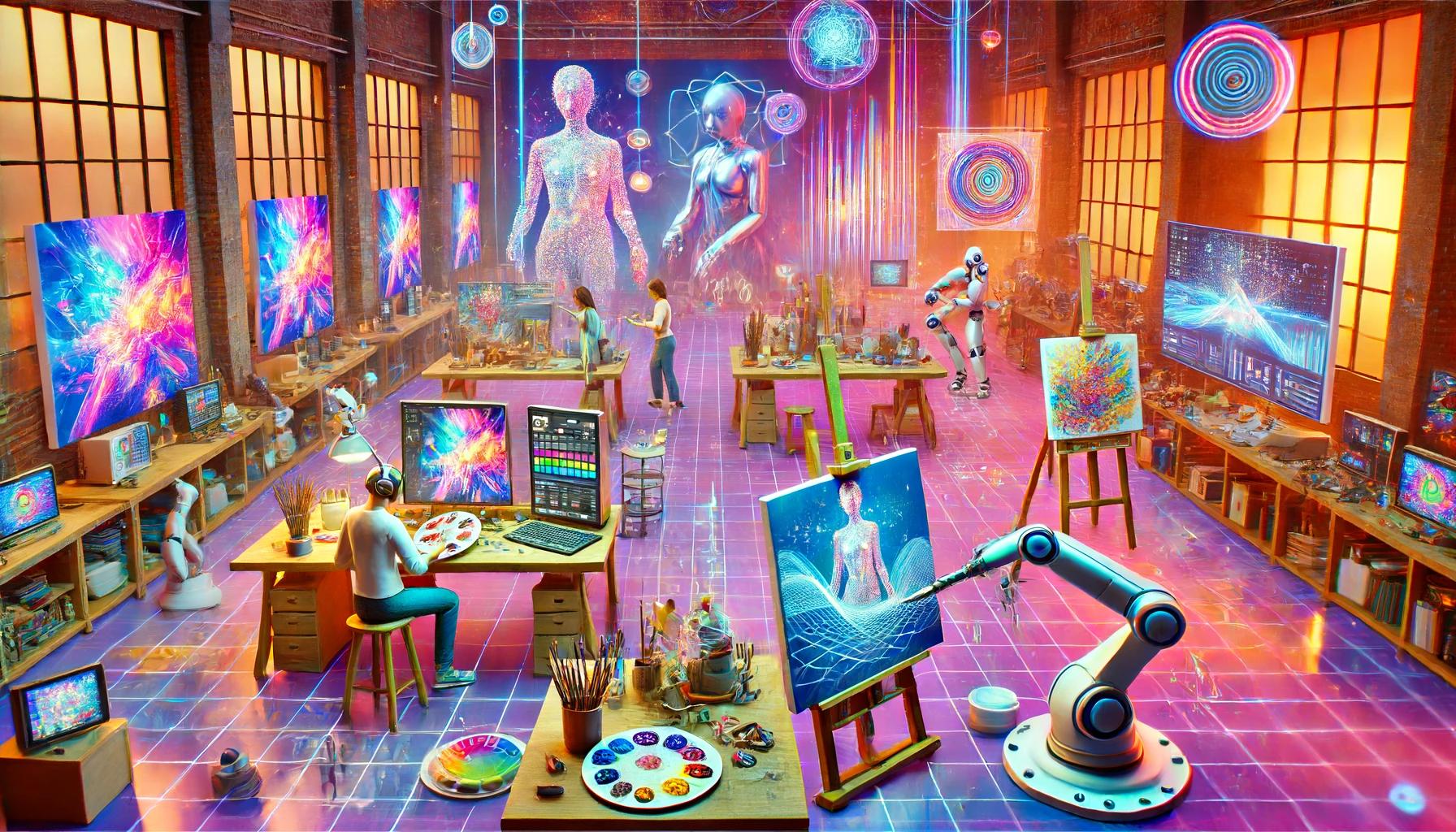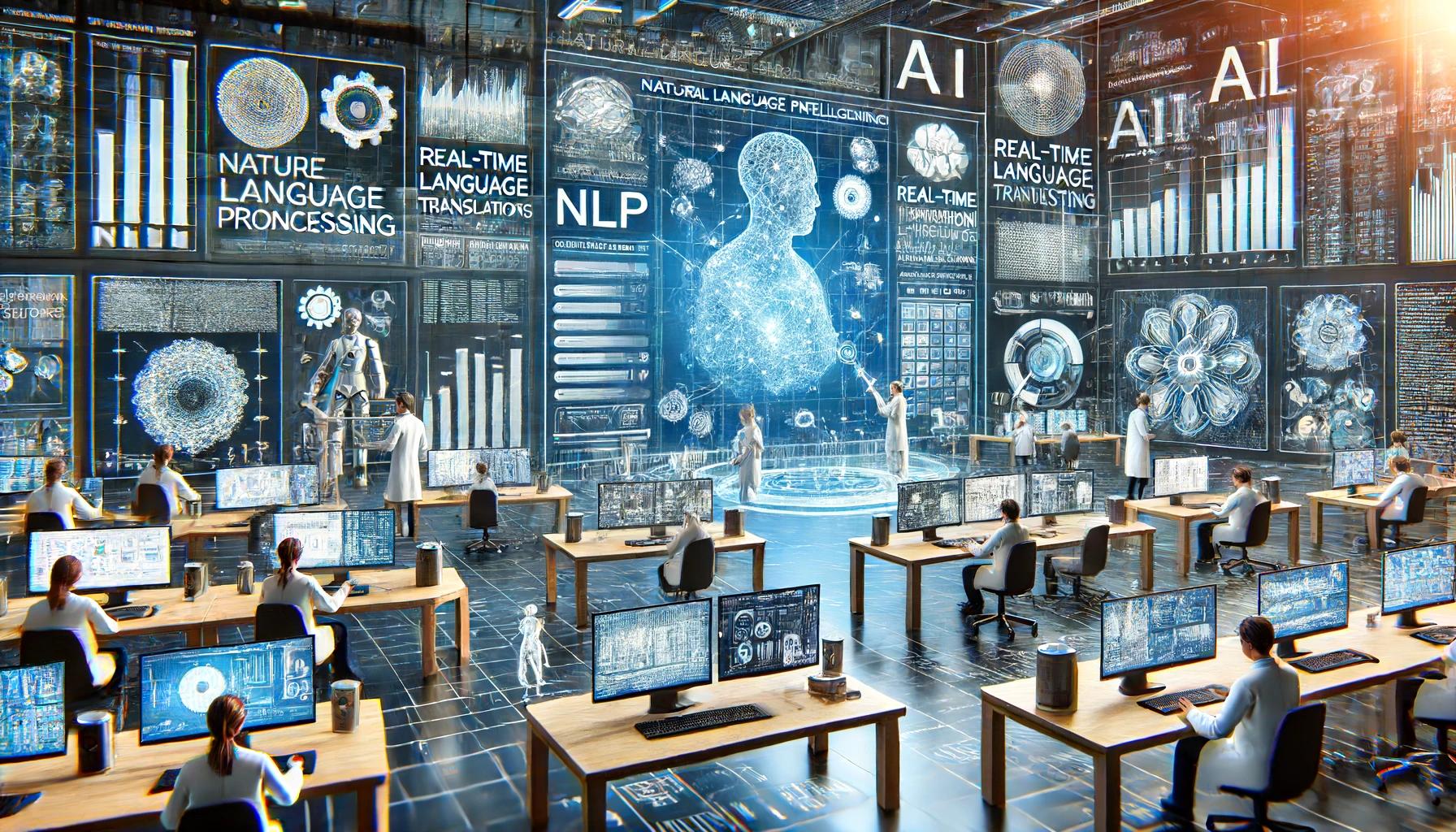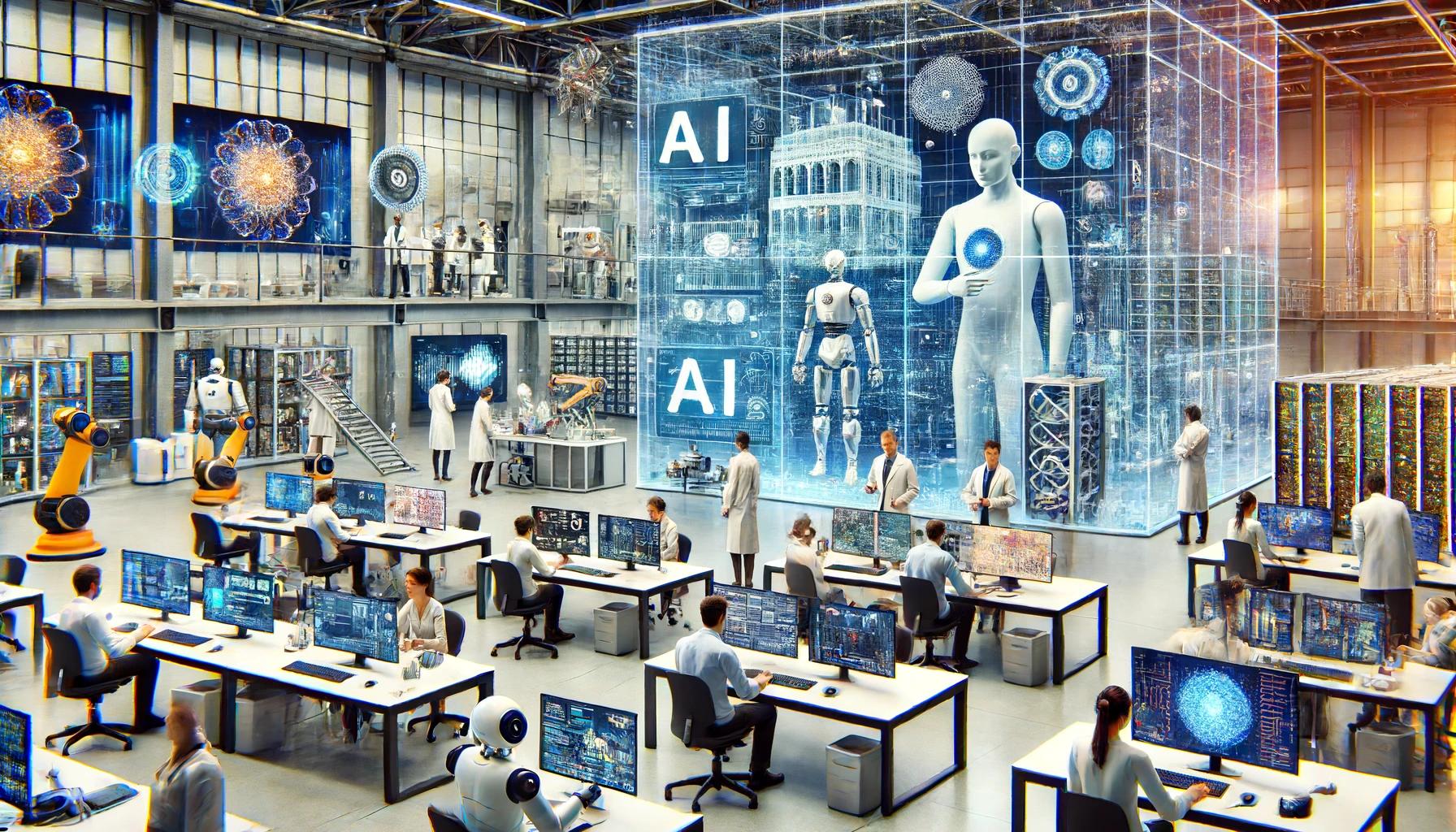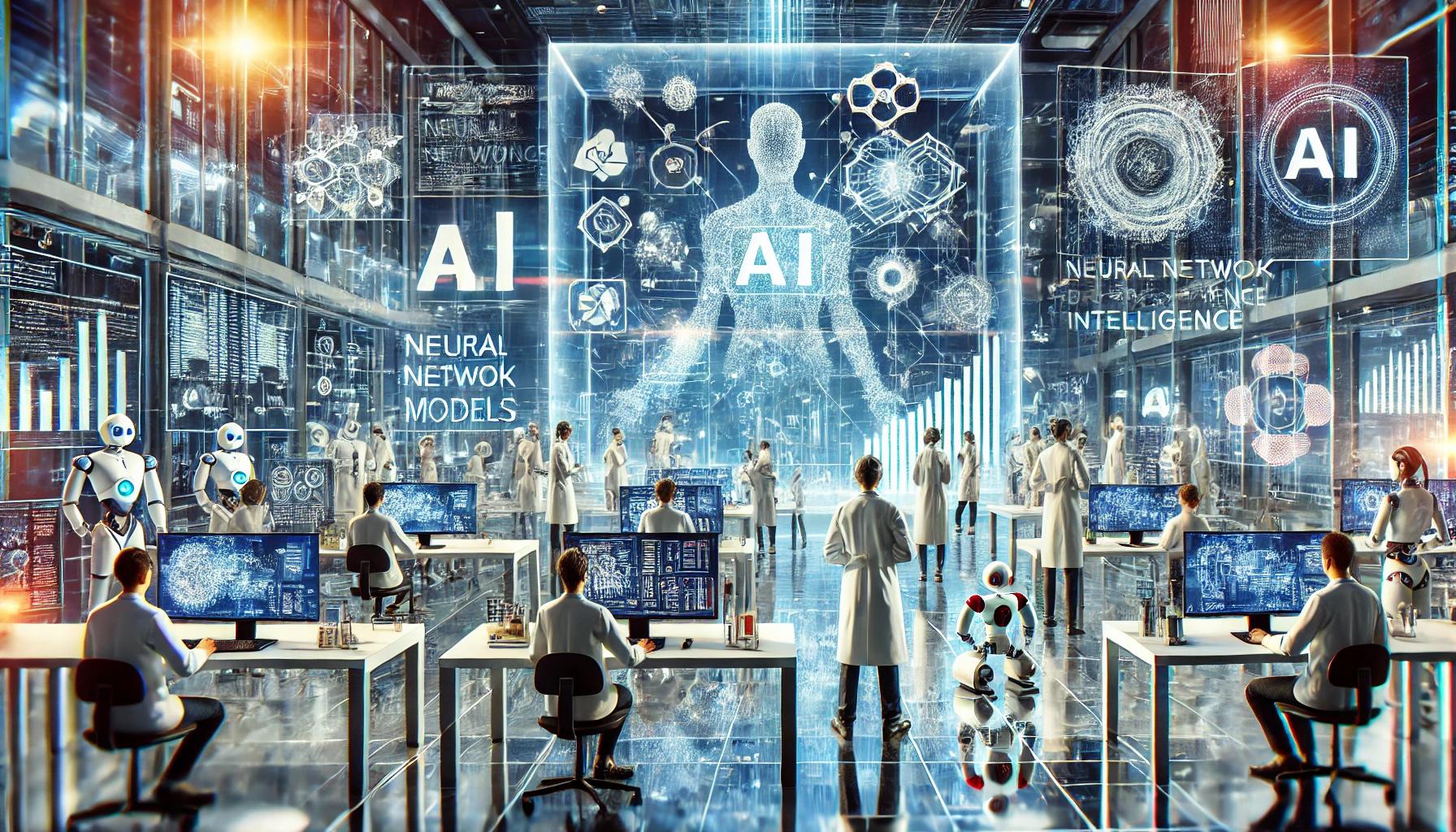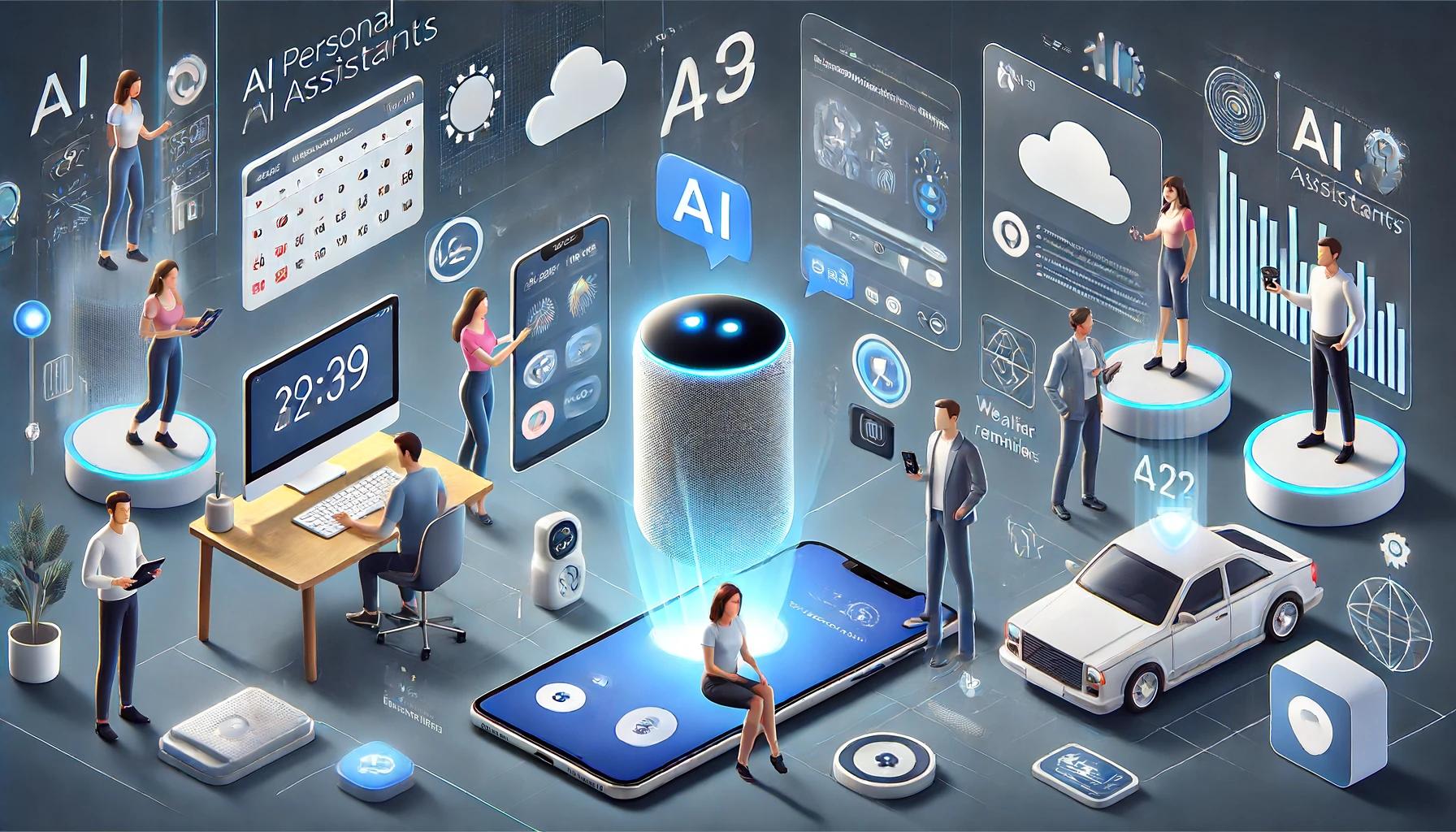- Introduction
- Definition of AI Art
- Brief History of AI in Art
- Importance and Relevance in the Modern Art Scene
- The Technology Behind AI Art
- Overview of AI and Machine Learning
- Key Algorithms and Techniques Used in AI Art
- Examples of AI Art Tools and Software
- The Creators: Artists and Engineers
- Collaboration Between Artists and Technologists
- Profiles of Leading AI Artists
- Case Studies of Successful AI Art Projects
- The Art: Styles and Mediums
- Different Styles of AI-Generated Art
- AI in Traditional Art Forms (Painting, Sculpture)
- Digital and Interactive AI Art
- Ethical and Philosophical Considerations
- Questions of Authenticity and Originality
- Intellectual Property Issues
- The Role of the Artist in AI Art Creation
- The Impact on the Art Market
- AI Art in Galleries and Museums
- Market Value of AI Artworks
- Collecting and Selling AI Art
- Future Prospects
- Potential Developments in AI Art
- The Evolving Relationship Between AI and Human Creativity
- Predictions for the Next Decade
Introduction
In recent years, the world has witnessed the emergence of a fascinating new genre that merges creativity with cutting-edge technology: AI art. This innovative form of art utilizes artificial intelligence to create pieces that challenge traditional notions of artistry and creativity. As AI continues to evolve, its impact on the art world becomes increasingly profound, sparking debates about the nature of art and the role of the artist.
Definition of AI Art
AI art refers to artworks created using artificial intelligence algorithms. These algorithms analyze vast amounts of data, learn patterns, and generate new images, music, or even literary pieces that can mimic or innovate upon human creations. AI art encompasses various forms, including paintings, digital art, sculptures, and interactive installations. A common approach involves using generative adversarial networks (GANs), where two neural networks—one generating art and the other evaluating it—work together to produce high-quality results.
For more detailed information on AI art, you can visit Artsy’s Guide to AI Art.
Brief History of AI in Art
The history of AI in art dates back to the 1960s when early computer-generated art experiments began. Pioneers like Harold Cohen created programs such as AARON, which could produce drawings autonomously. However, the advent of machine learning and deep learning in the 21st century revolutionized AI art. In 2018, a significant milestone was reached when Christie’s auctioned “Portrait of Edmond de Belamy,” an AI-generated artwork, for $432,500. This event marked the entry of AI art into the mainstream art market, highlighting its growing significance.
To explore the evolution of AI in art, check out The New York Times’ article on AI art history.
Importance and Relevance in the Modern Art Scene
AI art has become a crucial part of the contemporary art scene, pushing the boundaries of creativity and challenging traditional artistic processes. Artists and technologists collaborate to explore new aesthetics, question the role of the artist, and redefine what art can be. AI art opens up possibilities for personalized and interactive experiences, making art more accessible and engaging for a broader audience. Furthermore, it encourages discussions about the ethical implications of AI in creative fields, such as issues of originality and intellectual property.
For a deeper dive into the impact of AI art on the modern art scene, visit The Guardian’s article on AI and art.
The Technology Behind AI Art
AI art stands at the intersection of technology and creativity, leveraging advanced algorithms to produce works that can both mimic and expand upon human artistic endeavors. Understanding the technological foundation of AI art helps in appreciating its complexity and the innovation behind it.
Overview of AI and Machine Learning
Artificial intelligence (AI) and machine learning (ML) are the core technologies driving AI art. AI refers to the simulation of human intelligence processes by machines, particularly computer systems. These processes include learning, reasoning, and self-correction. Machine learning, a subset of AI, involves the use of algorithms that can learn from and make predictions based on data. By feeding these algorithms vast amounts of data, they can learn to recognize patterns and generate new content.
For more on AI and machine learning, check out IBM’s overview of AI and machine learning.
Key Algorithms and Techniques Used in AI Art
Several algorithms and techniques are pivotal in the creation of AI art. Some of the most notable include:
- Generative Adversarial Networks (GANs): GANs consist of two neural networks—a generator and a discriminator—that work in tandem. The generator creates new images, while the discriminator evaluates them. Over time, the generator improves its creations to the point where the discriminator can no longer distinguish between real and generated images. This technique is widely used for generating realistic images and has become a cornerstone of AI art.
- Convolutional Neural Networks (CNNs): Primarily used for analyzing visual data, CNNs are employed in tasks such as image recognition and classification. In AI art, CNNs can be used to apply artistic styles to images, a technique known as neural style transfer.
- Reinforcement Learning: This technique involves training an algorithm through rewards and punishments. In the context of AI art, reinforcement learning can be used to optimize the creation process based on specific aesthetic criteria.
For an in-depth look at these algorithms, visit MIT Technology Review’s article on key AI art techniques.
Examples of AI Art Tools and Software
Numerous tools and software platforms have been developed to facilitate the creation of AI art. Some of the most popular include:
- DeepArt.io: This platform uses neural style transfer to apply the styles of famous artists to user-uploaded images, creating unique artworks.
- Runway ML: Runway ML provides a user-friendly interface for using machine learning models, allowing artists to generate images, videos, and 3D models with ease.
- Artbreeder: Artbreeder uses GANs to enable users to create and modify images through simple sliders, blending various styles and features to produce new artworks.
- Deep Dream Generator: Developed by Google, this tool uses convolutional neural networks to find and enhance patterns in images, creating dream-like, surreal artworks.
For more information on AI art tools, explore Creative Bloq’s list of AI art tools.
The Creators: Artists and Engineers
The creation of AI art is a collaborative endeavor that brings together the unique perspectives and skills of both artists and technologists. This partnership fosters innovation and opens new frontiers in artistic expression.
Collaboration Between Artists and Technologists
Artists and technologists work together to bridge the gap between creativity and technical expertise. Artists bring their vision, creativity, and understanding of aesthetics, while technologists provide the knowledge of algorithms, coding, and machine learning. This collaboration often involves iterative processes where both parties contribute to refining the AI models to achieve desired artistic outcomes.
One prominent example is the partnership between artist Refik Anadol and teams of engineers and data scientists. Anadol uses AI to transform large datasets into immersive, visually stunning installations, illustrating how technology can amplify artistic expression.
For more insights on these collaborations, you can read Wired’s article on artist-technologist partnerships.
Profiles of Leading AI Artists
Several artists have emerged as pioneers in the AI art movement, pushing the boundaries of what is possible with machine learning and creativity.
- Mario Klingemann: Known for his work with neural networks, Klingemann creates pieces that explore human and machine creativity. His work has been featured in major galleries and he is recognized as a leading figure in the AI art community.
- Anna Ridler: Ridler combines AI with extensive research to create works that delve into data and human perception. Her projects often involve collecting and curating datasets, which she uses to train her algorithms.
- Refik Anadol: Anadol’s installations use AI to interpret and visualize data in captivating ways. His projects often involve large-scale public installations that transform spaces into dynamic, data-driven experiences.
- Sougwen Chung: Chung integrates AI with traditional art techniques, using robotic arms to assist in her painting process. Her work explores the relationship between human and machine creativity.
To learn more about these artists, visit Artsy’s profile on leading AI artists.
Case Studies of Successful AI Art Projects
Several AI art projects have gained significant attention and acclaim, showcasing the potential of this innovative art form.
- “Portrait of Edmond de Belamy” by Obvious: This AI-generated portrait was created by the Paris-based collective Obvious using GANs. It was sold at Christie’s auction for $432,500, marking a significant milestone for AI art in the traditional art market.
- “Memories of Passersby I” by Mario Klingemann: This installation uses GANs to generate endless portraits in real-time. The piece explores themes of identity and the uncanny, challenging viewers’ perceptions of art and authenticity.
- “Machine Hallucinations” by Refik Anadol: Anadol’s large-scale installation uses AI to process and visualize architectural datasets. The result is an immersive experience that transforms static data into dynamic visual narratives.
- “Fall of the House of Usher” by Anna Ridler: This project involved using a dataset of 19th-century botanical illustrations to create a visual narrative inspired by Edgar Allan Poe’s story. Ridler’s work explores themes of memory and decay through AI-generated imagery.
For more detailed case studies, check out The Verge’s feature on AI art projects.
The Art: Styles and Mediums
AI art spans a wide range of styles and mediums, from traditional forms like painting and sculpture to cutting-edge digital and interactive installations. This diversity showcases the versatility of AI as a creative tool and its potential to reshape artistic practices.
Different Styles of AI-Generated Art
AI-generated art encompasses various styles, reflecting the unique capabilities of machine learning algorithms and the creative visions of artists. Some notable styles include:
- Abstract: AI can produce abstract art that emphasizes shapes, colors, and patterns. These works often resemble modern abstract paintings, offering a fresh take on non-representational art.
- Realistic: Using techniques like GANs, AI can generate highly realistic images, from portraits to landscapes. These works can mimic traditional realism or create hyper-realistic scenes that challenge viewers’ perceptions.
- Surreal: AI’s ability to combine and manipulate data leads to surreal and dream-like artworks. These pieces often merge elements in unexpected ways, creating otherworldly visuals.
- Generative: Generative art involves algorithms that create artworks autonomously. This style emphasizes the process and rules defined by the artist, resulting in dynamic and often unpredictable outcomes.
To see examples of different styles of AI art, visit Artnome’s AI Art Gallery.
AI in Traditional Art Forms (Painting, Sculpture)
AI’s influence extends to traditional art forms, where it complements and enhances established techniques.
- Painting: AI algorithms, particularly neural style transfer, can apply the styles of famous painters to new images. This allows for the creation of paintings that blend traditional techniques with contemporary digital tools. For example, artists like Robbie Barrat use AI to generate paintings that explore themes of modernity and tradition.
- Sculpture: AI can assist in designing and producing sculptures. By analyzing 3D models and using generative design algorithms, artists can create intricate and complex sculptures that might be challenging to achieve manually. Sculptor Tobias Klein, for instance, uses AI to create data-driven sculptures that reflect scientific and aesthetic principles.
For more on AI’s role in traditional art forms, read The Art Newspaper’s article on AI and traditional art.
Digital and Interactive AI Art
Digital and interactive AI art represents the forefront of contemporary artistic practice, leveraging technology to create immersive and engaging experiences.
- Digital Art: AI-generated digital art can range from static images to animations and video art. Artists like Sougwen Chung use AI to create digital pieces that explore the intersection of human and machine creativity.
- Interactive Art: Interactive AI art involves artworks that respond to viewer input or environmental data. These pieces often use sensors, cameras, and other technologies to create dynamic experiences. For example, Refik Anadol’s installations use real-time data to transform spaces into ever-changing visual landscapes.
- Virtual Reality (VR) and Augmented Reality (AR): AI is also making its mark in VR and AR art. These mediums allow for immersive experiences where viewers can interact with AI-generated environments and objects. Projects like “AI: More than Human” showcase the potential of AI in creating interactive digital experiences.
For more information on digital and interactive AI art, visit Ars Technica’s feature on AI art.
Ethical and Philosophical Considerations
As AI art becomes increasingly prevalent, it raises several ethical and philosophical questions. These considerations are crucial for understanding the broader implications of AI in the creative field and navigating the challenges it presents.
Questions of Authenticity and Originality
One of the most significant debates surrounding AI art involves questions of authenticity and originality. Traditionally, art is valued for the unique perspective and personal touch of the artist. However, when an artwork is generated by an algorithm, it challenges our notions of what it means for a piece to be “authentic” or “original.”
- Authenticity: AI-generated art blurs the lines between human and machine creativity. Since AI can analyze and replicate existing styles and techniques, it can be difficult to determine the originality of a piece. Some argue that the human element is crucial for authenticity, while others believe that AI introduces a new form of authentic creativity that is valid in its own right.
- Originality: AI can create works that are derivative of the data it has been trained on, raising concerns about the originality of AI-generated art. If an AI is trained on a specific artist’s work, to what extent is the output considered original? This question is central to discussions about the value and significance of AI art.
For more on these questions, explore The Conversation’s article on AI and originality in art.
Intellectual Property Issues
The rise of AI art also brings up complex intellectual property issues. As AI algorithms can generate art based on existing works, determining ownership and copyright becomes challenging.
- Ownership: Who owns the rights to an AI-generated artwork? Is it the artist who created the algorithm, the company that owns the software, or the AI itself? Current legal frameworks struggle to address these questions, leading to a grey area in intellectual property law.
- Copyright: If an AI uses copyrighted material to learn and create new works, it raises concerns about copyright infringement. Artists and companies must navigate the legal landscape to ensure that their use of AI respects existing intellectual property laws.
For a detailed discussion on these issues, read Harvard Law Review’s examination of AI and intellectual property.
The Role of the Artist in AI Art Creation
The emergence of AI art has sparked a reevaluation of the artist’s role in the creative process. While AI can generate art autonomously, the artist’s input and vision remain essential in guiding and shaping the final product.
- Creative Direction: Artists play a crucial role in setting the parameters and training the AI. They decide on the datasets, the styles to be emulated, and the overall direction of the artwork. This involvement ensures that the resulting art aligns with the artist’s vision and creative intent.
- Curatorial Role: Artists often act as curators, selecting and refining the outputs generated by AI. They might discard many AI-generated pieces before choosing the ones that meet their artistic standards. This curatorial process highlights the collaborative nature of AI art, where human creativity and machine efficiency intersect.
- Conceptual Input: The conceptual aspect of AI art, including the themes, messages, and narratives, is driven by the artist. AI serves as a tool to realize the artist’s conceptual ideas, rather than replacing the artist entirely.
To understand more about the role of the artist in AI art, you can read Smithsonian Magazine’s article on AI and the evolving role of artists.
The Impact on the Art Market
The integration of AI art into the art market is transforming how artworks are created, valued, and traded. AI-generated pieces are making their way into prestigious galleries and auction houses, challenging traditional art market dynamics and offering new opportunities for collectors and artists alike.
AI Art in Galleries and Museums
AI art is increasingly featured in galleries and museums, reflecting its growing acceptance and significance in the art world. Institutions are recognizing the artistic value and cultural relevance of AI-generated works, leading to several notable exhibitions.
- Exhibitions: Major art institutions like the Museum of Modern Art (MoMA) and the Tate Modern have showcased AI art in dedicated exhibitions. These exhibitions explore the intersection of technology and creativity, highlighting the innovative nature of AI art and its impact on contemporary practices.
- Permanent Collections: Some museums have begun acquiring AI-generated artworks for their permanent collections. This inclusion signifies a broader recognition of AI art as a legitimate and important genre within the art historical canon.
- Public Engagement: AI art installations often engage the public in new ways, using interactive and immersive technologies to create dynamic experiences. These installations can attract a wider audience, including those who might not typically visit traditional art exhibitions.
For more insights on AI art in galleries and museums, visit The Art Newspaper’s article on AI in the art world.
Market Value of AI Artworks
The market value of AI artworks has been a topic of considerable interest and debate. Several high-profile sales have demonstrated the commercial potential of AI-generated art, though the market is still in its early stages of development.
- Auction Sales: One of the most significant milestones for AI art was the sale of “Portrait of Edmond de Belamy” by the Paris-based collective Obvious at Christie’s for $432,500 in 2018. This sale marked a turning point, highlighting the market’s willingness to invest in AI-generated art.
- Price Trends: While some AI artworks have fetched high prices, the market remains variable. Factors influencing the value include the reputation of the artist, the uniqueness of the piece, and the level of technological innovation involved. Over time, as the market matures, more consistent pricing trends may emerge.
- Market Perception: Collectors and investors are increasingly interested in AI art due to its novelty and the potential for high returns. However, skepticism remains among some traditional collectors who question the long-term value and artistic merit of AI-generated works.
For a detailed analysis of the market value of AI art, check out Artsy’s report on the market for AI-generated art.
Collecting and Selling AI Art
The process of collecting and selling AI art introduces new considerations for both buyers and sellers. Understanding these dynamics is essential for navigating this emerging market.
- Authenticity and Provenance: Provenance, or the history of ownership, is crucial in the art market. For AI art, this includes detailed information about the algorithms used, the datasets involved, and the artist’s role in the creation process. Establishing clear provenance helps build trust and value in AI artworks.
- Digital Ownership: AI art often exists in digital formats, raising questions about ownership and reproduction rights. Blockchain technology is increasingly used to establish and verify ownership of digital artworks through non-fungible tokens (NFTs), which provide a secure and transparent method for buying and selling digital art.
- Market Platforms: AI art is sold through various platforms, including traditional auction houses, online marketplaces, and specialized galleries. Online platforms, in particular, have become popular venues for selling AI art, offering wider accessibility and reach to global audiences.
- Collecting Strategies: Collectors interested in AI art should consider the artist’s reputation, the technological innovation of the piece, and the cultural significance of the work. Building a diverse collection that includes pioneering works and pieces from emerging AI artists can be a valuable strategy.
For more information on collecting and selling AI art, visit Christie’s guide to collecting AI art.
Future Prospects
The future of AI art is full of potential, with advancements in technology continuously pushing the boundaries of creativity and innovation. As AI becomes more sophisticated, its role in the art world will likely expand, leading to new forms of expression and collaboration between humans and machines.
Potential Developments in AI Art
Several exciting developments are on the horizon for AI art, driven by ongoing research and technological innovation.
- Enhanced AI Image Generation: Advances in AI image generation, such as improvements in generative adversarial networks (GANs) and other generative AI models, will enable the creation of even more complex and realistic artworks. These technologies will produce high-resolution images with greater detail and nuance, further blurring the line between human and machine-made art.
- Integration with Augmented and Virtual Reality: The integration of AI art with augmented reality (AR) and virtual reality (VR) will offer immersive experiences that transform how art is created and consumed. Artists will be able to create interactive environments where viewers can engage with AI-generated art in entirely new ways.
- Personalized Art Experiences: AI art generators like OpenArt can be used to create personalized art experiences tailored to individual preferences. By analyzing user data and feedback, AI systems can generate unique artworks that resonate with personal tastes, making art more accessible and meaningful to a broader audience.
- Collaborative Art Platforms: Platforms like OpenArt will continue to evolve, providing spaces where artists and technologists can collaborate seamlessly. These platforms will facilitate the sharing of AI models, datasets, and creative techniques, fostering a global community of AI artists.
For more on potential developments, visit MIT Technology Review’s article on the future of AI in art.
The Evolving Relationship Between AI and Human Creativity
The relationship between AI and human creativity is dynamic and continually evolving. As AI tools become more sophisticated, they enhance and expand human creative capabilities rather than replacing them.
- Augmenting Human Creativity: AI can serve as a powerful tool for artists, providing new ways to explore creative ideas and streamline the artistic process. By automating certain tasks, AI allows artists to focus more on conceptual development and experimentation.
- New Forms of Collaboration: The collaboration between humans and AI will lead to novel art forms that combine the strengths of both. Artists will increasingly use generative AI to co-create works, blending human intuition with machine precision.
- Redefining Authorship: The concept of authorship in art will continue to evolve as AI plays a more significant role in the creative process. This shift will prompt deeper discussions about the nature of creativity, originality, and the role of the artist in an AI-enhanced world.
For insights on the evolving relationship between AI and human creativity, explore Smithsonian Magazine’s article on AI and creativity.
Predictions for the Next Decade
Looking ahead, several trends and predictions can be made about the future of AI art over the next decade.
- Mainstream Acceptance: AI art will become more widely accepted and integrated into mainstream art practices. As AI tools become more user-friendly, a broader range of artists will adopt these technologies, leading to a greater diversity of AI-generated art.
- Market Growth: The market for AI art will continue to grow, with increased interest from collectors, galleries, and auction houses. The use of blockchain and NFTs will further legitimize and facilitate the trading of digital AI artworks.
- Technological Advancements: Ongoing advancements in AI technology will lead to more sophisticated and capable art generators. These improvements will enable the creation of artworks that are indistinguishable from those made by human artists, raising new questions about the definition of art.
- Educational Integration: AI art will become a standard part of art education, with institutions incorporating AI tools and techniques into their curricula. This integration will prepare the next generation of artists to work with AI and push the boundaries of creative expression.
For a comprehensive view of future trends, read The Verge’s predictions on AI and art.
